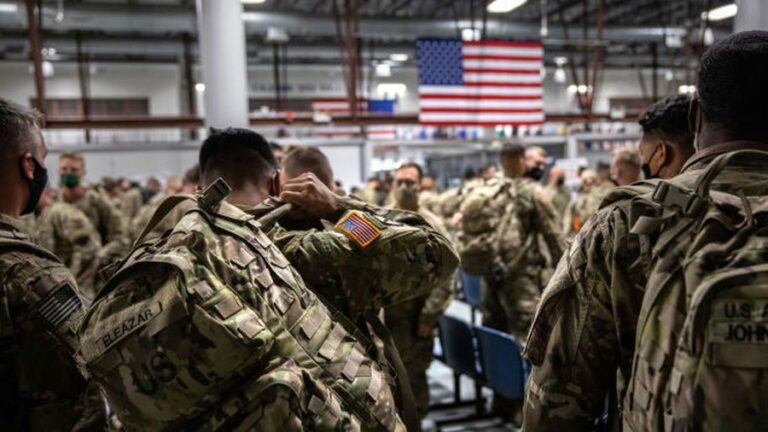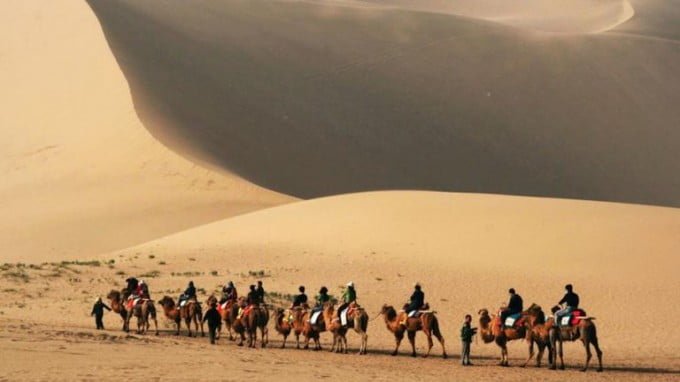War in the Caucasus: One More Effort to Shape a New World Order
Fighting in the Caucasus between Azerbaijan and Armenia is about much more than deep-seated ethnic divisions and territorial disputes. It’s the latest clash designed, at least in part, to shape a new world order.
The stakes for Azerbaijan, backed if not egged on by Turkey, are high as the Azeri capital’s Baku International Sea Trade Port seeks to solidify its head start in its competition with Russian, Iranian, Turkmen and Kazakh Caspian Sea harbours, to be a key node in competing Eurasian transport corridors. Baku is likely to emerge as the Caspian’s largest trading port.
An Azeri success in clawing back some Armenian-occupied areas of Azerbaijan, captured by Armenia in the early 1990s, would bolster Baku’s bid to be the Caspian’s premier port at the crossroads of Central Asia, the Middle East and Europe.
The Caspian is at the intersection of the Trans-Caspian International Transport Route (TITR) from China to Europe via Kazakhstan, Azerbaijan, Georgia and Turkey and the International North-South Transport Corridor (INSTC) that aims to connect India via Iran and Russia to Europe.
An Azeri military success would also cement Turkey’s claim to be a player in former Soviet lands that Russia views as its sphere of influence and bolster nationalist sentiment among Iranians of ethnic Azeri descent that account for up to 25 percent of the Islamic republic’s population, many of whom have risen to prominence in the Iranian power structure.
In an indication of passions that the conflict in the Caucasus evokes, Iranians in areas bordering Azerbaijan often stand on hilltops to watch the fighting in the distance.
Iranian security forces have recently clashed with ethnic Azeri demonstrators in various cities chanting “Karabakh is ours. It will remain ours.”
The demonstrators were referring to Nagorno-Karabakh, an Armenian enclave inside Azerbaijan that is at the core of the conflict in the Caucasus.
The demonstrations serve as a reminder of environmental protests in the Iranian province of East Azerbaijan at the time of the 2011 popular Arab revolts that often turned into manifestations of Azeri nationalism.
Baku port’s competitive position was bolstered on the eve of the eruption of fighting in the Caucasus with the launch of new railway routes from China to Europe that transit Azerbaijan and Turkey.
China last month inaugurated a new railway route from Jinhua in eastern China to Baku, which would reduce transport time by a third.
In June, China dispatched its second train from the central Chinese city of Xi’an to Istanbul via Baku from where it connects to a rail line to the Georgian capital of Tbilisi, the eastern Turkish city of Kars and onwards to Istanbul.
Azeri analysts charge that Armenian occupation of Azeri territory and demands for independence of Nagorno-Karabakh, threaten Baku’s position as a key node in Eurasian transport corridors.
“By continuing its occupation Armenia poses (a) threat not only to Azerbaijan’s territorial integrity but also to the regional stability and cooperation,” said Orkhan Baghirov, a senior researcher at the Baku-based Center of Analysis of International Relations, a think tank with close ties to the government.
Mr. Baghirov was referring to recent Russian, Iranian, Turkmen and Kazakh efforts to match Baku in upgrading their Caspian Sea ports in anticipation of the TITR and INSTC taking off.
Russia is redeveloping Lagan Port into the country’s first ice-free Caspian Sea harbour capable of handling transhipment of 12.5 million tonnes. The port is intended to boost trade with the Gulf as well as shipment from India via Iran.
Lagan would allow Russia to tap into the TITR that is part of China’s Belt and Road Initiative (BRI) via the Russian railway system as well as Kazakh, Turkmen, and Azeri ports.
It would also bolster Russian, Iranian and Indian efforts to get off the ground the INSTC that would hook up Caspian Sea ports to create a corridor from India to Russia via Iran, and in competition with the Suez Canal, to northern Europe.
The INSTC would initially link Jawaharlal Nehru Port, India’s largest container port east of Mumbai, through the Iranian deep-sea port of Chabahar on the Gulf of Oman, funded by India to bypass Pakistan, and its Caspian Sea port of Bandar-e-Anzali to Russia’s Volga River harbour of Astrakhan and onwards by rail to Europe.
Iranian and Indian officials suggest the route would significantly cut shipping time and costs from India to Europe. Senior Indian Commerce Ministry official B B Swain said the hook up would reduce travel distance by 40 and cost by 30 percent.
Iran is further investing in increased capacity and connectivity at its Amirabad port while at the same time emphasizing its naval capabilities in the Caspian.
For their part, Turkmenistan inaugurated in 2018 its US$1.5 billion Turkmenbashi Sea Port while Kazakhstan that same year unveiled its Kuryk port.
The fighting between Azerbaijan and Armenia with Turkey and Israel supporting the Azeris; Russia struggling to achieve a sustainable ceasefire; Iran seeking to walk a fine line in fighting just across its border; and Saudi Arabia and the United Arab Emirates attempting to stymie Iranian advances wherever they can, threatens to overlay port competition in the Caspian with aspects of the Middle East’s myriad conflicts.
Said Iran scholar Shireen T Hunter: “Largely because of the Iran factor, the Caucasus has become linked with Middle East issues. Israel and Saudi Arabia have tried to squeeze Iran through Azerbaijan… Thus, how the conflict evolves and ends could affect Middle East power calculations…. An expanded conflict would pose policy challenges for major international players.”







